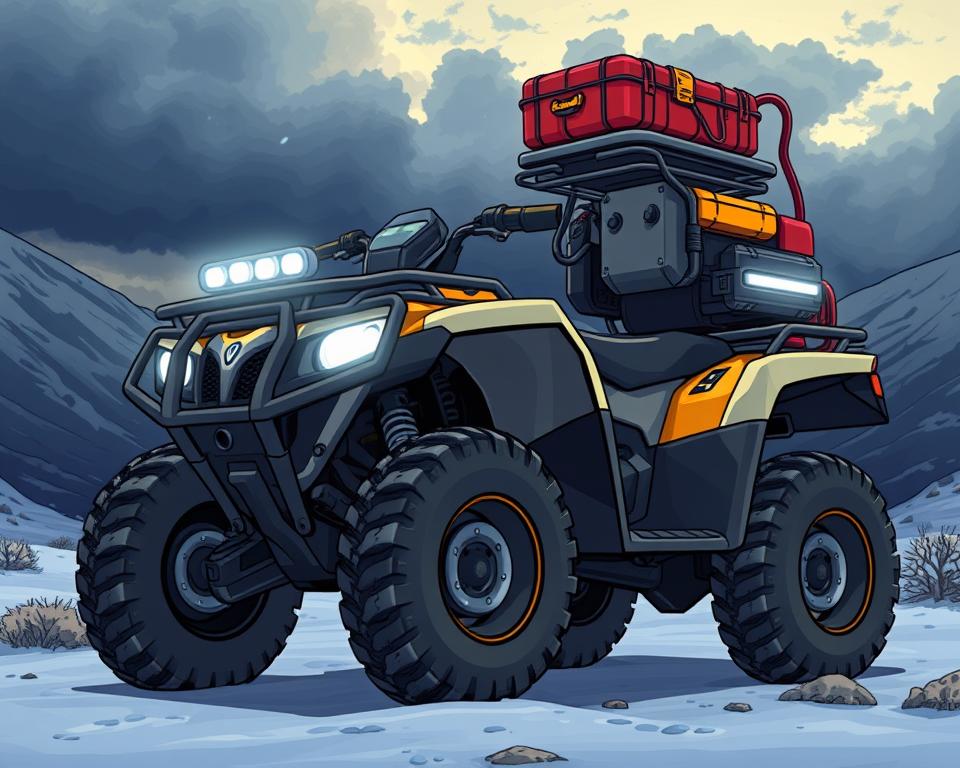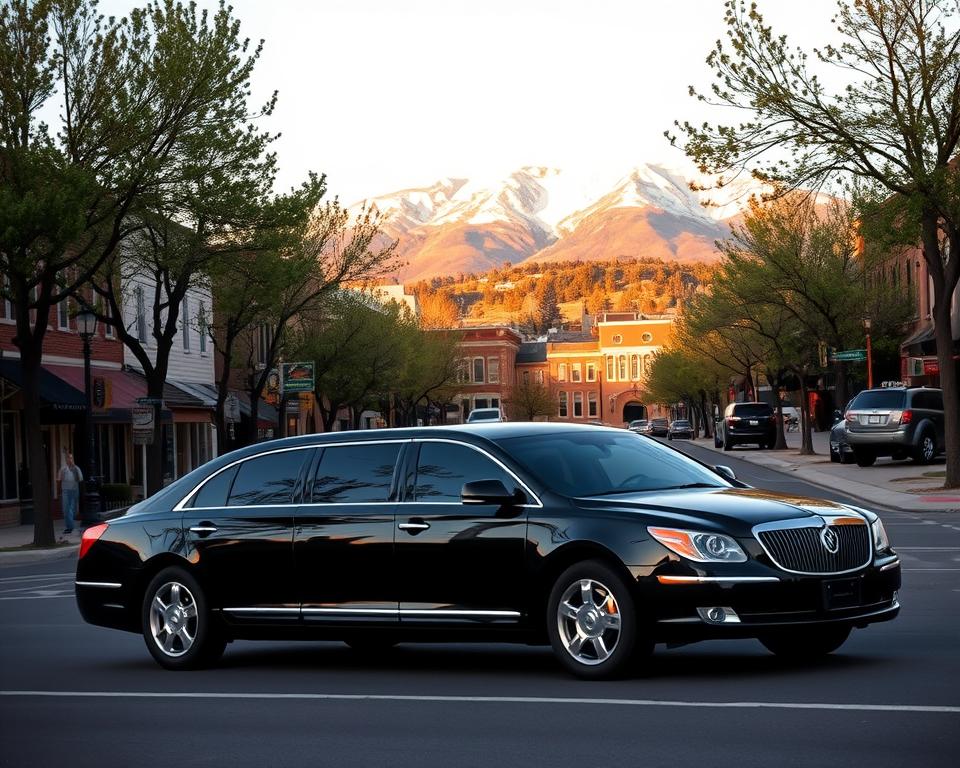Complete ATV Off-Road Safety Prep Guide
Can you believe nearly some 450,000 ATV-related injuries are treated in U.S. emergency rooms each year? This alarming figure highlights the need for safety and preparedness in off-road adventures. The Essential ATV Off-Road Checklist is your guide to a safe and enjoyable ride. Whether you’re tackling rocks or dunes, it’s all included. With the right safety gear and Can Am renegade lift essentials, you can minimize risks and boost your adventure.
Primary Conclusions
- Use this checklist first to prep safely and thoroughly.
- Your gear list is critical for staying protected off-road.
- Regular maintenance is key to keep your ATV in top shape.
- Water and snacks—musts for long off-road sessions.
- Master your GPS and maps to stay on track.
- Be ready for unexpected weather changes to stay comfortable during your adventure.
- Trailside fixes? Have your toolkit and recovery gear ready.
Understanding the Importance of Safety Gear
Off-road adventures require a strong focus on safety. The excitement of ATVs brings potential hazards. Proper gear guards you against mishaps. Gear up correctly with this ATV safety gear checklist.

Essential Protective Gear
Maximizing protection involves several key items:
- Riding Helmets: Only DOT-certified lids will protect your skull.
- Goggles: Block dirt and grit with quality goggles.
- Gloves: Wear durable gloves for better grip and hand protection.
- Boots: Wear sturdy boots that cover the ankles to prevent injuries.
- Body Armor: Wear armor to guard your torso on rough trails.
- Neck Protection: A neck brace protects your spine in a crash.
Emergency Preparedness
Emergency preparedness is just as important as protective gear. An effective emergency kit can be a lifesaver in unexpected situations. Key items to include are:
- First aid kit
- Multi-tool
- Tire repair kits
- Portable air compressors
- Emergency blankets
- Whistles
- Matches
ATV Equipment for Optimal Performance
Proper equipment is essential for boosting your ATV’s performance on trails. Don’t leave home without these ATV must-haves. Routine checks keep your ATV working its best.
Must-Have ATV Equipment
- All-Terrain Tires: Invest in tires designed for various terrains to improve traction and handling.
- Cargo Systems: Use efficient storage compartments for tools and emergency supplies, ensuring quick access when needed.
- Quality Fuel Tank: A high-quality fuel tank prevents leaks and ensures you have enough fuel for extended rides.
- First Aid Kit: Stock your kit with bandages, antiseptic, and meds.
Regular Maintenance for Longevity
Routine care keeps breakdowns at bay. Regular inspections should encompass:
- A clean air filter = a happy engine.
- A well-lubed chain spins quietly and reliably.
- Ensure pads and discs are in prime condition.
This ATV maintenance checklist is essential for keeping your vehicle in peak condition and ready for adventure.
The Essential ATV Off-Road Checklist
Don’t skip your pre-ride safety scan. An effective ATV maintenance checklist ensures your vehicle’s safety and performance. Every point matters—don’t rush. Spend a few minutes now for peace of mind later.
Pre-Ride Inspection Basics
Your pre-ride look-over sets the tone for safety. This quick evaluation helps riders identify and address issues before they start. Key elements to check include:
- Tire pressure and tread condition
- Fluid levels such as oil and fuel
- Brakes and controls functionality
- Operational lights and horn
- Chain or driveshaft integrity
T-CLOC Inspection Method
T-CLOC covers every critical system. Tires, Controls, Lights, Oil/Fuel, Chain—don’t miss a spot. This method ensures all critical areas are covered:
| Inspection Area | Checklist Items |
|---|---|
| Tires and Wheels | Check tire pressure, inspect tread depth, look for damage |
| Controls | Test brakes, throttle, and clutch for smooth operation |
| Lights | Ensure headlights, brake lights, and indicators are functioning |
| Oil and Fuel | Check oil level, inspect for leaks, and fill fuel tank |
| Chain/Driveshaft | Examine for wear, proper tension, and lubrication |
Spending a few minutes on this ATV maintenance checklist can make rides safer and more enjoyable. Keep the adventure going with no surprises.
Hydration and Nutrition for Long Rides
Don’t underestimate water and snacks on extended outings. Dehydration slows reaction and focus—pack extra water. Carry extra water to prevent fatigue and keep energy levels up during the adventure. The right snacks are also key for maintaining stamina on the trail.
Importance of Staying Hydrated
Hydration is critical for ATV riders to stay alert and capable throughout their journey. A hydration pack with sip tube makes it easy. Consider using a hydration pack for convenience and to monitor water intake effectively.
High-Energy Snacks to Pack
Choosing the right snacks is vital for extended ATV rides. Opt for non-perishable items that are easy to consume. Some ideal choices include:
- Protein bars
- Nut mixes
- Dried fruits
- Beef jerky
Snack smart for sustained energy. Mix sweet and salty options for flavor and function.
Navigation Tools for Off-Roading Adventures
Exploring uncharted territory demands reliable navigation tools. Off-road navigation tools are invaluable for staying on track, no matter the terrain.
Advanced GPS Systems
High-end GPS units guide you through the wild. GPS should work without cell service and last all day. Garmin, TomTom, and others make GPS units built for bumps and dust.
Traditional Navigation Aids
Technology is key, but traditional tools are also essential. A compass never needs a signal. Knowing how to use these tools is critical, adding security to your excursions. Combining advanced tech with traditional aids prepares you for any situation on your journey.
Communication Equipment for Safety
Stay in touch even off the grid. Using reliable ATV communication gear is vital for safety. Talking to your team prevents misadventures.
Group rides need reliable radios. Pick units with strong, clear signal range. Get instant alerts about obstacles ahead. When choosing two-way radios, look for models with:
- Weatherproof construction to resist the elements
- Extended run-time for extended trips without needing a recharge
- Channel selection for clear communication without interference
No ride is complete without radios. They keep everyone coordinated and secure. Radios cut through noise and barriers. Clear comms = better rides.
Self-Rescue Gear for ATV Riders
Don’t be caught unprepared—pack rescue gear. Self-rescue gear for ATVs is key to handling challenges on your own. Being self-sufficient elevates confidence and safety.
Winches and Recovery Kits
Winches are vital for self-rescue, helping pull your ATV from tough spots. Combine winch power with the right accessories. Recovery kits usually include:
- Tow straps
- D-rings
- Recovery boards
- Gloves
Knowledge plus gear equals true self-rescue. Don’t let stuck wheels end your ride.
Trail Recovery Essentials
Pack these extras along with your winch. These include:
| Equipment | Purpose |
|---|---|
| Recovery Straps | Used for towing or pulling ATVs out of tight situations. |
| Shovel | Helps clear obstacles and dig out vehicles when stuck. |
| Traction Mats | Provides grip under tires in muddy or slick conditions. |
| Portable Air Compressor | Enables quick tire inflation after deflating for better traction. |
Arming your ATV with the right self-rescue gear ensures you can handle any obstacles. Skills plus gear equal top-tier off-road safety.
Staying Adaptable: Preparing for Weather Changes
Trail weather can change in minutes. Be prepared for sun, rain, or wind at any moment. Pack for every possible forecast.
Layering your clothes is key to adapting to temperature changes. A dry base keeps you cozy. Fleece or wool gives you warmth on demand. Finish with a rain-and-wind jacket. This setup ensures you stay comfortable, no matter the weather.
Weather-Appropriate Clothing
- Rain Shells: Essential for keeping dry during unexpected rain showers.
- Breathable Pants: Pants that vent yet keep out the rain.
- UV Gear: Lightweight, long-sleeved shirts and wide-brimmed hats safeguard against harmful UV rays.
- Insulated Gloves: Warm gloves maintain dexterity in chill.
Gear up for every climate challenge. Comfortable riders ride longer and safer.
Tools for On-Trail Repairs
Your toolkit can make or break your day on the trail. Don’t skimp on repair gear. These tools help address minor breakdowns or issues that may arise during your adventure.
Must-Have Tools and Kits
A well-prepared rider should assemble a basic tool kit. A compact kit with everything you need. Critical ATV repair tools might include:
- Tire irons for changing flat tires
- Pliers for gripping and cutting
- Wrenches for various sizes of bolts and nuts
- A multi-tool for versatility
- Spare items such as spark plugs and electrical wire
- Duct tape for quick fixes
Tools at hand mean no surprises.
Basic Emergency Supplies
Tools alone won’t save you—bring these extras. These supplies help ensure your safety in challenging situations:
- First aid kit for injuries
- Flashlight with extra batteries for night-time visibility
- Emergency whistle for signaling assistance
- Reflective triangles or flares to warn other riders
- Water and high-energy snacks for sustenance
Preparedness significantly impacts your off-roading experience. Never leave home without them.
In Summary
Preparation is the secret to epic trails. Follow this checklist and choose quality gear. This ensures you’re ready for any terrain.
Gear up fully and ride securely. Plan smart to ride hard and safe. Focus on fun, not fears.
Be prepared, ride safe, and make great memories. The journey is as important as the destination. Check this list, then conquer nature.
FAQ
What should I include in my ATV safety gear checklist?
Start with a DOT helmet and sturdy goggles. Gloves, suitable footwear, and body armor are also necessary. Consider a neck brace for extra safety. Remember to pack an emergency kit with a first aid kit and multi-tools for preparedness.
How can I ensure my ATV is well-maintained?
Keep filters clean and chain well-lubed. Always test your brakes before a ride. A consistent maintenance routine extends your machine’s life and keeps it ready for off-road adventures.
Explain the T-CLOC check.
The T-CLOC inspection method covers several key areas. Tires, Controls, Lights, Oil, and Chain are checked in T-CLOC. T-CLOC confirms all systems go for trail use.
Recommended hydration levels for trail rides?
Pack extra hydration for safety. Proper hydration wards off exhaustion. Use a hydration bladder for quick sips.
Must-have navigation tools for ATV trips?
Get a durable GPS with offline maps. Also carry a compass and laminated maps.
Role of radios on the trail?
Effective communication is vital for safety and reassurance during off-road adventures. Radios work where phones don’t.
What self-rescue gear should every ATV rider carry?
Be ready with winch and recovery essentials. Include straps, shackles, and traction boards.
How to handle trail weather swings?
Use a base, mid, and shell layering system. Don’t get caught soaked—bring waterproofs. Sun protection is also critical to prevent UV exposure.
What tools should I pack for on-trail repairs?
A compact tool set lets you fix flats and loose bolts. Include tire irons, pliers, wrenches, a multi-tool, and spare parts like a spark plug.


